Reach to Lukla by Flight for start the Trek
Lukla is a small town and the starting point for all treks to the Everest region, including the Everest Kalapathar Trek. It serves as a gateway with a small airstrip to Everest region trekking, and there is no road access from Kathmandu to Lukla. Trekkers must either fly from Kathmandu or Ramechhap or trek from Phaplu or Jiri. Regular flights to Lukla are operated by Tara Air, Summit Air, and Sita Air from Kathmandu or Ramechhap during the main trekking season.
During peak trekking months—March, April, May, September, October, and November—flights to Lukla may operate from Ramechhap/Manthali due to Nepal's aviation rules aimed at avoiding congestion and air traffic delays. Ramechhap Airport is approximately 144 kilometers east of Kathmandu and requires a 3 to 5-hour drive by private vehicles from Kathmandu.
Regarding luggage, there is a weight limit of 15 kg per passenger, including your hand-carry bag. It is advisable to keep your luggage under this limit to avoid extra charges. In case of an overload, your bag may be transported on a subsequent flight, so you may need to wait for a few hours at Lukla to receive the luggage.
Be prepared for potential delays or cancellations, as weather conditions can impact flights to and from Lukla. If flights are delayed or canceled, you may need to add a few extra days to your itinerary. We will do our best to adjust the itinerary as needed. If you do not have extra time before or after your trekking itinerary, you might consider taking a helicopter close to Lukla or shifting your trekking route to another region. Arranging for one or two additional days in your trip is highly recommended to accommodate potential flight delays or cancellations and to ensure you can board your pre-planned international flight.
Our trekking staffs are experienced and professional in both trekking and problem-solving, minimizing the chances of mishandling situations.
Best Season for Everest Kalapathar Trek
The best season for Everest Kalapathar Trek is during the pre-monsoon (spring) and post-monsoon (autumn) seasons. These periods offer the most favorable weather conditions for trekking in Nepal Himalayas.
Both seasons offer good weather conditions, but April, May, October, and November are considered the best months for the Everest Kalapathar Trek. These months provide suitable conditions for trekking without significant hazards. However, keep in mind that the weather in the mountains can be changeable, so it's always advisable to be prepared for sudden changes regardless of the season.
Choosing the best time depends on your preferences, availability, and tolerance for crowds, as both spring and autumn have their unique advantages.
- Spring season (March to May):
Spring is considered the best time for the Everest Kalapathar Trek. During this season, the weather is generally stable, with mild temperatures during the day and clear skies, providing excellent visibility of the surrounding landscape and mountain. The trekking trail is also adorned with vibrant rhododendron blooms, creating a colorful and picturesque setting. The pleasant temperatures make it a comfortable time for hiking, and the longer days allow for more exploration during the trek.
- Autumn season (September to November):
Autumn is another popular and recommended season for the Everest Kalapathar Trek. The weather tends to be dry, with generally clear skies, offering breathtaking views of the Himalayan peaks. Temperatures are moderate, and the environment is favorable for hiking. Autumn, being the post-monsoon season, features crisp, clean air after the rains, providing stunning vistas of the surrounding mountains and landscapes during the trek.
- Summer & winter season (July to August & Nov to Feb)
Everest Kalapathar Trek is possible but not recommended during the summer and winter seasons, because these times can be more challenging compared to the preferred trekking seasons of spring and autumn. Summer is less recommended due to challenging weather conditions and potential risks, such as monsoon rains and leeches. Winter can be suitable for experienced trekkers, but it requires preparation for cold conditions and the appropriate gear and equipment. During the winter months (December to February), you may encounter snow, while summer months (June to August) may bring rain and leeches, making the weather and trail conditions less favorable.
How hard is Everest Kalapathar Trek?
The Kalapathar trek is a popular trekking route in Everest Region and it is considered to be moderately difficult to strenuous. The difficulty level of the Kalapathar Trek is varying depending on some factors like fitness level, previous trekking, acclimatized days and weather conditions during the trek. so, it requires good physical fitness, good health condition, and previous trekking experience and has to be able to walk 6-8 hours a day for successfully complete the trip.
One of the main challenges of the Kalapathar trek is the high altitude because Kalapathar itself is situated at an elevation of 5545 meters above from sea level. Generally altitude sickness is potential anxiety to all trekkers to reach the summit of Kalapathar
The trek usually takes about 10-14 days but depends on specific route and your pace you choose. The trail of the Kalapathar trek include steep ascents, descents, rocky, moraine, steps and some section that might require scrambling.
A moderate to high level of physical fitness is highly recommended for the Everest Kalapather Trek. Regular exercise and previous trekking experience are the beneficial but if you are beginner, you have to be ready with proper preparation and the right mindset to attempt the Kalapathar Trek.
Anyway our guide manages the proper clothing and gear, tea-house for accommodation, resting place of rest, acclimatization day to manage high altitude, slow walk, and short easy steps to complete the trip without any stress.
Acclimatization day to reduce the Altitude Sickness for the Trip
An acclimatization day is necessary to reduce the risk of high-altitude sickness during the 15-day Everest Kalapathar Trek. This trek takes place in a remote, high-altitude area of the Everest Region, starting at 2,800 meters in Lukla and ascends to higher elevations of 5,364 meters at EBC and over 5,545 meters at Kala Patthar. Along the way, trekkers pass through beautiful Sherpa villages, forests, and other high-altitude landscapes with rocky and icy path. As you ascend, oxygen levels and air pressure decrease compared to sea level. Once you reach an altitude above 3,500 meters, you may experience symptoms of altitude sickness, such as nausea, vomiting, diarrhea, headaches, loss of appetite, tiredness, dizziness, and sleeplessness.
Namche Bazaar and Dingboche are designated as our acclimatization rest days in the itinerary for this reduce the altitude sickness on this Everest Kalapathar Trek. These rest day help prevent altitude sickness and allow you to adapt to the environment. If you experience any symptoms of altitude sickness during this journey, it is important to address them immediately to avoid difficulties in completing the Everest Kalapathar trip. To prevent these issues, you should follow your guide's instructions, as they are knowledgeable about high-altitude sickness as well as follow the itinerary closely, as proper acclimatization helps your body adapt to higher elevations. Additionally, stay hydrated by drinking plenty of water, eat a well-balanced diet with sufficient carbohydrates, maintain a comfortable pace, and avoid alcohol and sedatives.
When ascending on the 3,500 meters, be honest with your guide about how you are feeling. Your guide will advise you to walk slowly and may suggest that you sleep at a lower altitude before ascending further. This practice, known as acclimatization, helps reduce the risk of altitude sickness. However, if you continue to feel unwell despite following these recommendations, you should return to a lower altitude.
Accommodation in the Everest Kalapathar Trek
Accommodation options along the Everest Kalapathar Trekking route are generally basic but comfortable teahouses. But In popular places such as Lukla, Phakding, and Namche, there are sufficient accommodations, including some with luxury facilities. There are sufficient accommodations but during peak season, it can be difficult to find accommodation, but guides can manage this by making advance bookings via phone calls.
Normally, lodges offer basic private accommodation (typically with 2 beds per room) for twin-sharing, equipped with beds, blankets, and pillows. The bathrooms are commonly shared indoor facilities with squat and western toilets, and sometimes hot showers are available, often using solar power or a gas geyser for an additional charge. Every lodge has a communal dining area with a heater, where trekkers can eat, relax, and socialize with others.
However, the cost of a hot shower will be high, ranging from 500 to 1000 NPR per shower, especially at higher altitudes where heating water is more challenging due to the cold temperatures.
Note: If you choose to use luxury accommodations, the cost is significantly higher than basic accommodations, but the facilities are also luxurious, resembling those of a star hotel
Food in Everest Kalapathar Trek
During the Everest Kalapathar Trekking, food options primarily consist of local Nepali and Sherpa dishes, with some basic Western options available in more popular areas. Every teahouse has a food menu, and the food items are almost the same at every teahouse in each location. You can choose food from the menu based on your requirements. Most teahouses grow fresh vegetables in their gardens and serve them to customers, especially except above then Namche Bazaar.
The cooks are generally trained, often hired from more urban areas, but the taste of the food might differ from Western cuisine. It is advisable to eat vegetarian during the journey because it can be difficult to obtain fresh meat due to the remote location and the less popularity route.
Local Nepali and Sherpa food:
- Dal Bhat:A staple dish served to accompany, consisting of rice served with lentil soup (dal), seasonal vegetables, and pickle.
- Momos:Steamed or fried dumplings filled with vegetables, tuna fish, cheese, eggs, potatoes, or a mix, served with dipping sauces.
- Thukpa:An energetic noodle soup with vegetables and sometimes eggs, flavored with local spices.
- Tibetan Bread:Flatbread fried or baked, often served with honey jam or butter for breakfast or as a snack.
- Tsampa:Roasted barley flour, eaten as porridge or mixed with butter tea (suja). It looks similar to baby food.
Western and International Options:
- Pasta and Noodles:Available in tea houses, often prepared with local ingredients and sauces.
- Omelets:Commonly served for breakfast with items like omelet, fried, boiled, poached eggs, accompanied by Tibetan bread or toast.
- Potatoes and Vegetables:Sometimes served as standalone dishes or as sides with main meals, featuring various varieties flavored with local spices.
- Others:Soups, Piza, fried items, pancake, and some others
Beverages:
- Hot Drinks:All types of hot drinks such as tea, coffee, hot lemon, lemon ginger honey, and hot chocolate are available throughout the trek, but they are often served without sugar; sugar will be provided separately.
- Soft Drinks:Carbonated beverages like cola and Sprite, as well as bottled water, are available throughout the trek.
Drinking Water in Everest Kalapathar Trek
Safe drinking water is essential during the Everest Kalapathar Trek, especially since you are from a different place and the journey through the Himalayas is lengthy. Staying hydrated is vital for completing the journey successfully. It's recommended to consume bottled, boiled, or treated water to prevent waterborne illnesses, aid digestion, and help avoid high altitude sickness. Bottled water is available at teahouses and shops along the route, with prices increasing as altitude rises, typically ranging from NPR 100 to NPR 500 per liter.
It is highly recommended that all trekkers bring a reusable water bottle for refilling from natural water sources, which helps reduce the cost of buying bottled water. Many natural sources such as streams, rivers, and taps are available along the route, but this water should always be purified before drinking. Methods for purification include water purification tablets, filters, or UV purification. Your guide can also provide information about safe drinking water sources during the Everest Kalapathar trekking.
Requires Permits & Permits Cost for the Trek
The Everest Kalapathar Trekking route is situated within the Sagarmatha National Park in the Khumbu Pasang Lhamu Rural Municipality in the Everest region of Nepal. Therefore, you need to purchase a Sagarmatha National Park entrance permit and a Khumbu Pasang Lhamu Rural Municipality entrance permit. Another required permit is the TIMS (Trekkers Information Management System) card, which is for your safety and security, as it helps keep track of trekkers' whereabouts in the region. All permits are mandatory for the Everest Kalapathar Trek.
These permits can be obtained through a reputable trekking company from the Tourism Board in Bhrikuti Mandap, Kathmandu. The Sagarmatha National Park entrance permit can be buy in Monjo and Khumbu Pasang Lhamu Rural Municipality entrance permit can be purchased in Lukla after starting the journey. You or your guide must carry these permits throughout the trek, as you will need to show them and register at every checkpoint along the trail. If you attempt to trek without these permits, you will need to purchase them on-site at double the cost (as a penalty) or you may be forced to turn back. Requiring permits are given below:-
Khumbu Pasang Lhamu Rural Municipality entrance permits
- Cost: US$ 30 per person, per trek for all foreigners
- Cost: US$ 20 per person for SAARC (South Asian Association for Regional Cooperation) citizens
TIMS (Trekkers Information Management System) Card:
- Cost: US$ 20 per person, per trek
Sagarmatha National Park Entrance Fees:
- Cost: US$ 30 per person, per trek for all foreigners
- Cost: US$ 15 per person for SAARC (South Asian Association for Regional Cooperation) citizens
Cost of Everest Kalapathar Trek
The cost of the Everest Kalapathar Trek depends significantly on the package, services, season and trekking agency you choose. Factors influencing the cost include the duration of the trek, the level of comfort you prefer, whether you hire a guide and/or porter, and your choice of transportation like public or private. We offer affordable prices with the best service for all trekkers who choose to Everest Kalapathar trek with us. This package spans 15 days, from your arrival to your departure from Nepal. For our 15-day Everest Kalapathar Trek itinerary, the cost ranges from US$ 1,250 to US$ 1,700, depending on the group size. This cost covers transportation, accommodation, food, guide, porter, and required permits for the trip.
However, it does not include emergency evacuation, travel insurance, all drinks, trekking equipments and extra luxury accommodation. It is recommended to obtain detailed quotations from several reputable trekking agencies to compare and choose the best option that suits your needs and budget. We guarantee to provide you with reasonable costs and high-quality service for the Everest Kalapathar Trek within the above range. Additionally, we offer competitive and transparent pricing with no hidden costs, ensuring you get the best value for your money. Our packages include all essential services, making your planning and budgeting straightforward and hassle-free.
Luggage Load Carried by Porters during the Trek
If you are doing Everest Kalapathar Trek with just a guide, it will be a cheaper journey, but the guide will not carry your luggage because they are professionals and have their own luggage to carry. In this case, you can hire a porter-cum-guide who handles both guiding and carrying your luggage, typically about 10 to 12 kg.
If you are in a group, we usually assign one porter for every two trekkers, so each trekker's luggage should weigh around 10 kg. If you hire a Porter, a porter typically carries 20 to 25 kg during the trek in Nepal. Trekking with both a guide and a porter highly recommended because they makes walking easier and gives you more free time to enjoy the trekking and climbing, resulting in a memorable trekking experience in Nepal during the Everest Kalapathar Trek.
Electricity and Charging Facilities
Most teahouses along the Everest Kalapathar Trekking trail have electricity, but availability is limited at higher elevations like above then Tengboche. Electricity in most areas is often generated by mini hydroelectric power, while solar power is more common in teahouses at above Tengboche. Charging electronic devices like phones and cameras usually incurs an extra cost, typically ranging from 200 to 1000 NPR per device for a full charge. During the busy trekking season, charging facilities will be in high demand, so it is highly recommended to bring a power bank to charge your electronic devices.
Communication (mobile & Wi-Fi Network) along the trek
Communication (mobile and Wi-Fi) options along the Everest Kalapathar Trek are generally available with good network coverage, but some remote areas like Dingboche and Lobuche may have weak or intermittent signals.
Mobile Network: Mobile network coverage is available in many places along the Everest Kalapathar Trekking route. You can purchase these SIM cards in Kathmandu. It is advisable to carry SIM cards from both major providers (Ncell and Nepal Telecom) to increase the chances of having a signal. The quality of the mobile network can vary; in some locations, you might get 3G or 4G connectivity, while in others, you might only have 2G or no signal at all.
Wi-Fi Network: Most teahouses along the Everest Kalapathar Trek offer Wi-Fi for an additional cost. However, the connection can be slow and may not always be available due to weather conditions or technical issues. Therefore, we highly recommend not relying on Wi-Fi to regularly connect with your family and friends. If you have an emergency and need to contact your family, our guide will assist you in managing the connection by mobile network.
Acclimatization:
When traveling to higher elevations in the high Himalayan region, high altitude sickness is a regular problem. Although it develops fairly quickly, the symptoms can be avoided. If you have prior high-altitude trekking experience, it might be preferable, but if not, you should take precautions to avoid high-altitude sickness if you plan to walk over three thousand meters. In order to avoid altitude sickness while trekking in Nepal, you should walk carefully, drink enough water, abstain from alcohol, ascend higher, and sleep at low elevation. You should also spend two nights for every 500 meters over the elevation of 3500 meters. All of our trekking routes are adaptable and include days for acclimatization. Your health and safety come first so that you may complete the trek without incident. In case things worsen, we give you some essential medications to help with an emergency rescue.
As a result, you must advise your Guide or Leader of your health status each day. Based on his reaction, he will decide whether or not to let you continue on your trip.
Tipping information
The trekking and climbing guide, as well as the porter, is essential to the success of the trip, ensuring that it is completed smoothly and without issues. Tipping is an important aspect of trekking in Nepal, as it acknowledges and appreciates the hard work of the local staff who assist you throughout your journey. It is customary to tip at the end of the trek, and you should gather all team members (guide, porter, assistant guide) together to distribute the tip. Tips are generally given in cash, preferably in US dollars or Nepalese rupees, and it is best to use small denominations to facilitate easier distribution
While the typical guideline is to tip around 10% of the total payable amount, you can adjust this based on the quality of service provided. Recommended tipping amounts are as follows:
- Guide: $12-$15 per day
- Climbing Guide: US$ 80 total
- Porter: $8-$10 per day
- Assistant Guide: $8-$12 per day
These tips are highly recommended to motivate the team and reward them for their outstanding service, contributing to a memorable and inspiring experience.
Trip Extension:
After finishing the walk, if you have extra time, you can engage in other activities or go on another quick trek in Nepal. Chitwan National Park and Bardiya National Park for jungle safari excursions are only two of our many short travel packages and adventure activities. You can go sightseeing in Pokhara, go trekking in Nagarkot or Dhampus, or go rafting for the day on the Trisuli River.
Paragliding, kayaking, ultra light flight, bungee jumping, and mountain biking are examples of adventure sports. These are all optional add-on activities to your package that are not included in the price. If you choose to participate in these activities with us after your vacation, we will organize them at a fair price and give you a generous discount.
Required packing list for Everest Kalapathar Trek
Travel equipment is essential to pack before your trip. Below is the recommended packing list. We understand it may seem like a lot to carry from home, so we suggest packing light and bringing only the necessary items. If you’re missing something, you can hire or buy it in Kathmandu, especially around Thamel.
These general items are suitable for all seasons while trekking in Nepal, but the list may vary depending on the season and the duration of your chosen trek. It is highly recommended to choose lightweight and multi-functional gear and to minimize unnecessary items. This approach will help reduce the weight of your pack and make your trekking experience more comfortable. Therefore, it’s important to ask your trekking organizer for a detailed packing list specific to your trek. They will provide you with clear information about what to bring.
Requirements Documents for Everest Kalapatthar Trek:
- Passport and 4 passport size photos
- Travel insurance details (in case an emergency evacuation if needed)
- Boarding passes for flights
- Driver’s license (if needed)
- Cash USD
- Credit/Debit Card (Ensure you have $500 on your card in case an emergency helicopter evacuation is needed)
Logistics Things for Everest Kalapatthar Trek
- Sleeping bag (Comfort rating -15 Celsius recommended)
- Sleeping bag liner (Optional)
Footwear Things
- Trekking boots: one pair lightweight
- Sandals for city and tea house footwear
- Shoes for the plane and tea houses (Optional)
- Gaiters for hiking in winter to the base camp
- Thin, lightweight inner socks
- Thick, warm wool hiking socks
Clothing for Body
(Please make sure that you have non-cotton clothing for trekking)
- Base-layer t-shirts (e.g. running t-shirts)
- Fleece/Windproof jacket
- Waterproof jacket
- Down jacket for warmth
- Travel clothes and City Wear
- Underwear
- Base-layer trousers (optional)
- Waterproof trousers
- Trekking trousers
- Trekking shorts (Optional)
- Gloves and wool hat
- Bandanna or scarf
Health Requirements (Basic First Aid Kit)
- First-aid kit; should contain lip salve, Aspirin, Band Aids, anti-histamine, Imodium or similar tablets for mild cases of diarrhea
- Re-hydration powder, extra prescription drugs you may be taking if any particular
- Wet wipes for cleaning can be purchased in Kathmandu
Others Necessary Things:
- Sunglasses and Sun cream
- Towel
- Book (reading and writing materials)
- MP-3 /Music, headphones and ear plug (who know some people on group are snoring) as optional.
- Travel wash
- Hand sanitizer, wet wipes
- A day bag: 35 liters
- A duffel or rucksack with straps to go over your back (Max 12 kg of weight for porters to carry)
- Dry Liner or Dry Bag
- Water bottle/thermos/ camel bag: At least 2 L. Nalgen bottles best.
General Toiletries
- Toilet papers/ tissue
- Contact lenses, Glasses (if needed)
- 1 medium sized quick drying towel
- Tooth brush/paste (preferably biodegradable)
- Multipurpose soaps (preferably biodegradable)
- Nail clippers
- Face and body moisturizer
- Feminine hygiene products
- Small mirror
- On Personal Hygiene
- Wet wipes (baby wipes)
- Anti-bacterial hand wash
Others (Optional) Things
- Trekking Poles
- Large plastic bags – for keeping items dry inside your kit / duffel bag
- Travel game i.e. chess, backgammon, and scrabble. (for luxuries)
- Binoculars (for luxuries)
- Trail Map/Guide book (if you are alone)


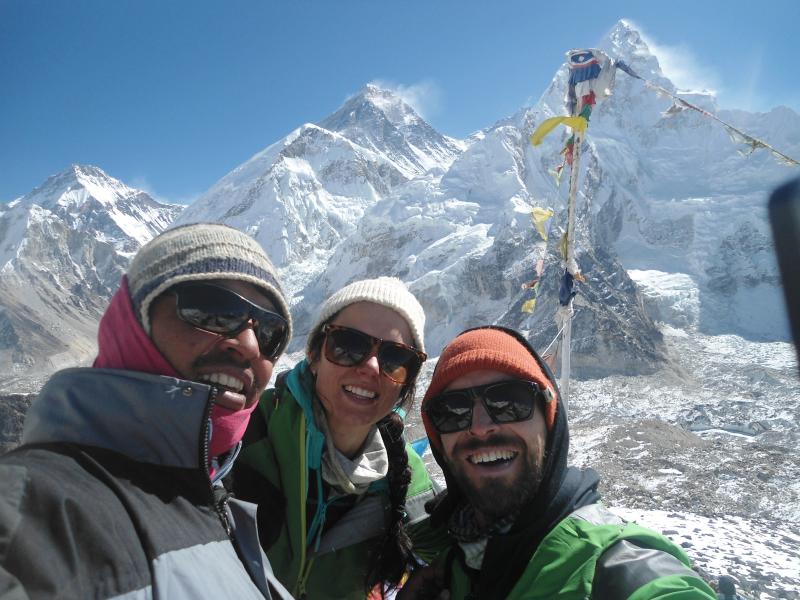
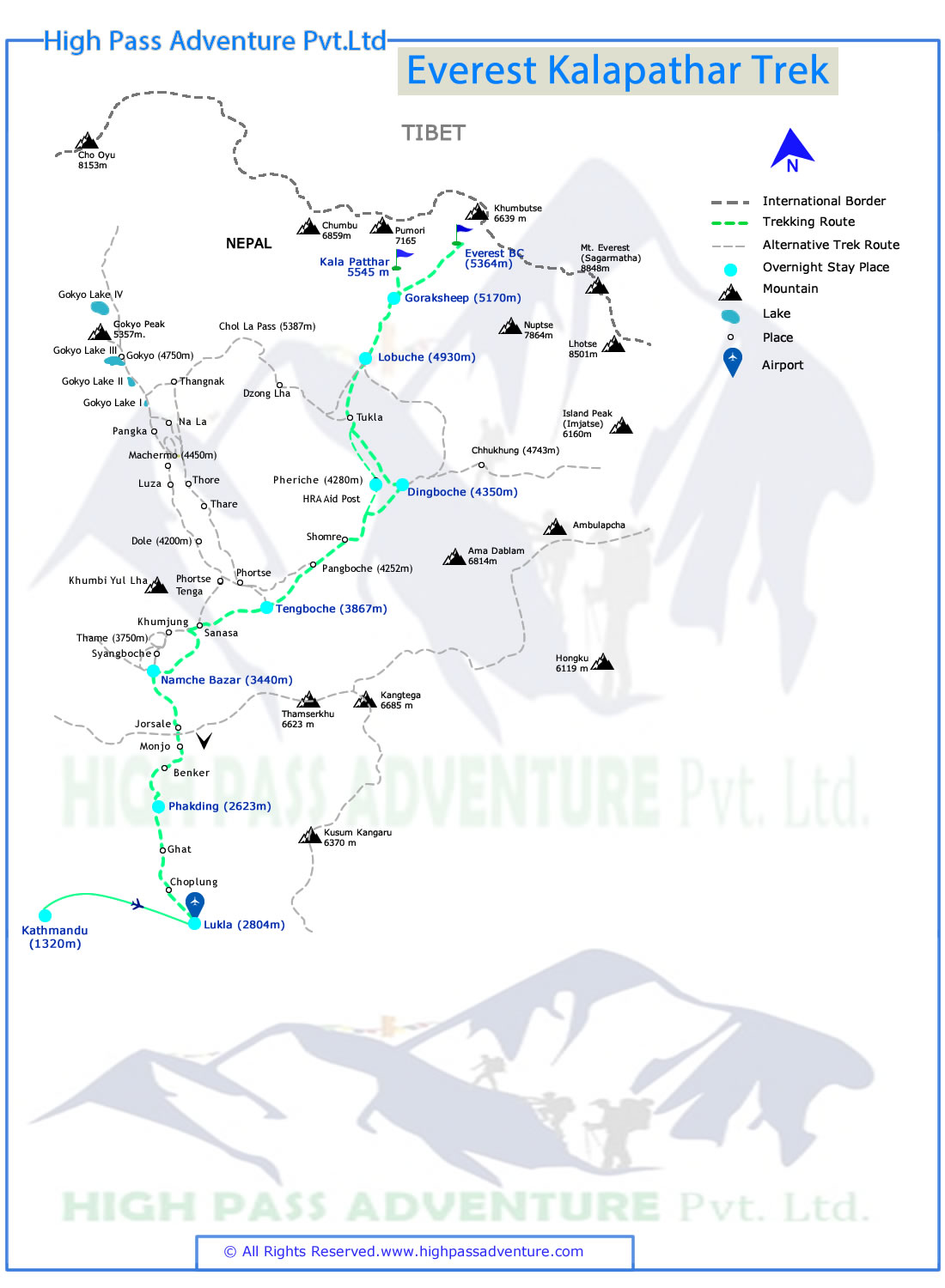



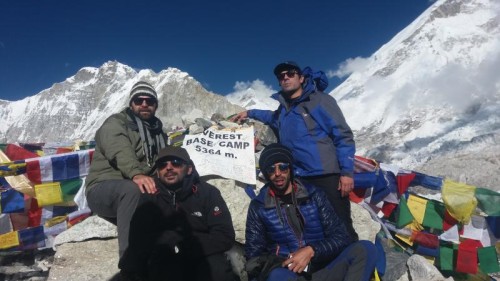
 USD 1340
USD 1340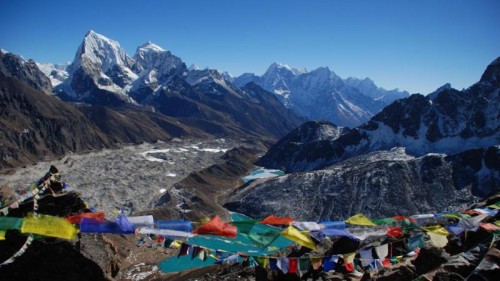
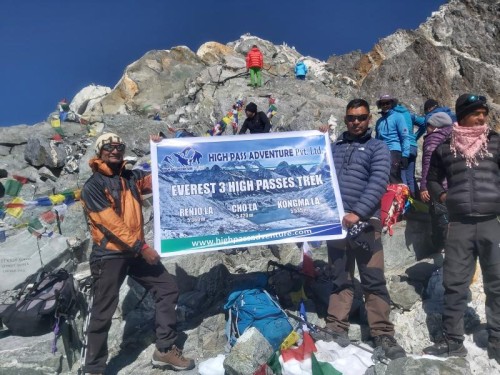
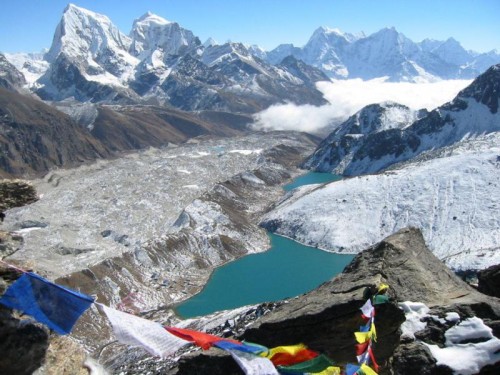
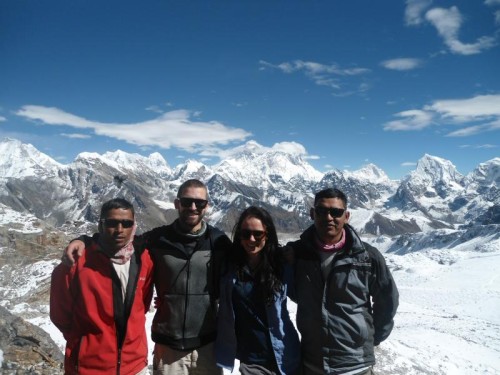

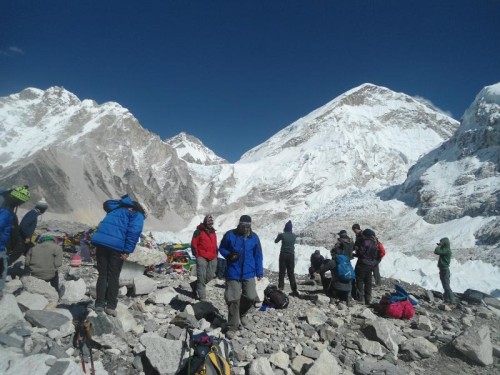
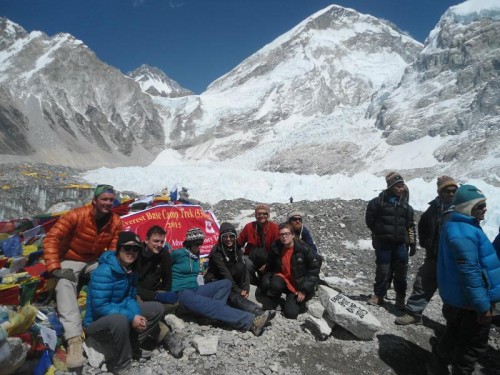


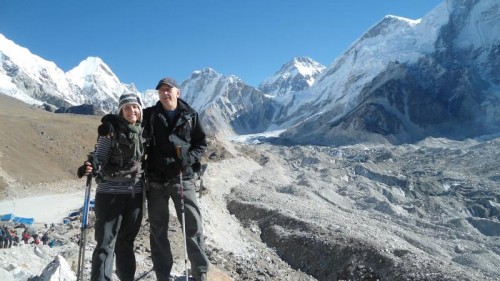
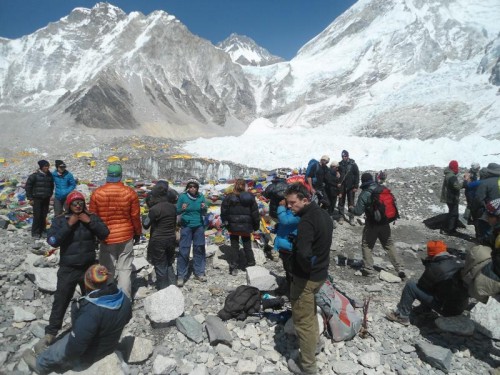
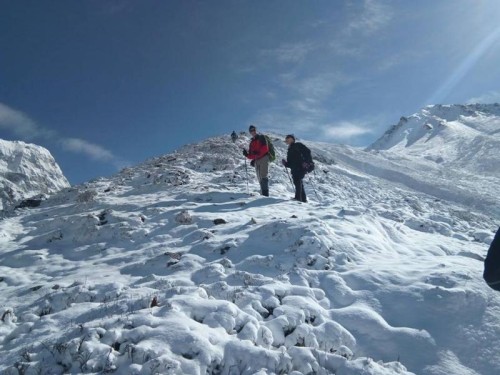

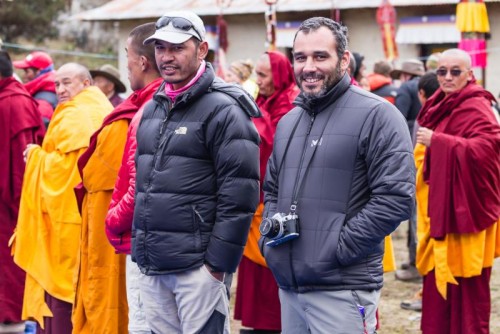
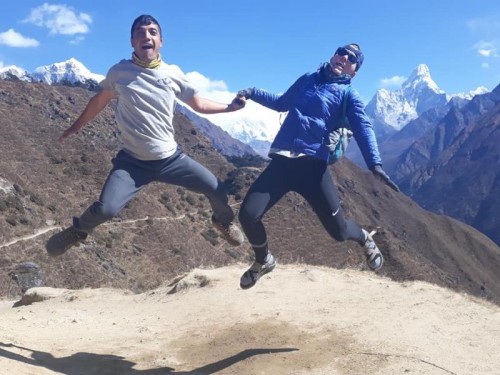

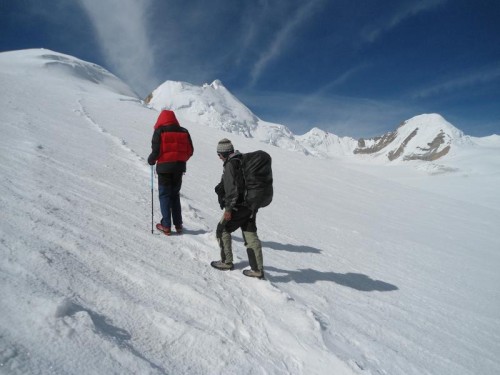
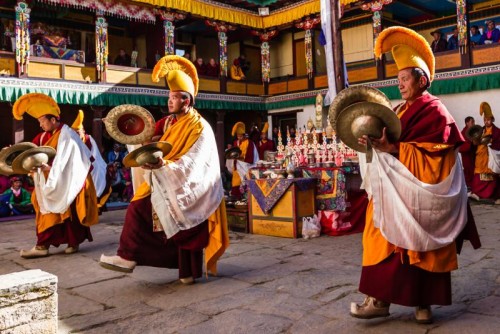
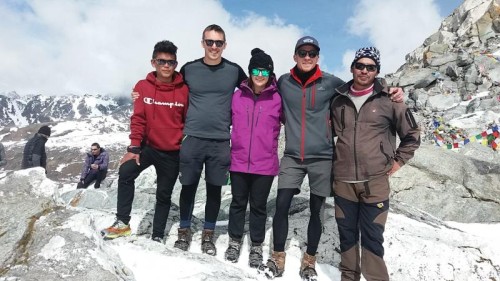

Amanda A.
United States
Purna is the Best Guide Ever !!!
16th July, 2023
Purna was our guide during our 14 day trek to Mt. Everest Base Camp and Kalapathar in Oct 2015. He is one of the best guides you can have for this adventure. He was knowledgeable, helpful, kind, and just fun! He was extremely helpful when my brother got sick along the way and knew exactly what to do to make sure he was ok. He was extremely patient with my mom, staying with her as she walked slower than the main group, providing a hand, shoulder, and smile when she needed it. In the end we all made it to base camp, Kalapathar and had a wonderful time doing it. Purna's expertise and sense of humor played a big role in making this the best experience of my life. You are truly in good hands with him. Now he owns High Pass Adventure Trekking Company. I do not hesitate to recommend him and his trekking company. Thanks